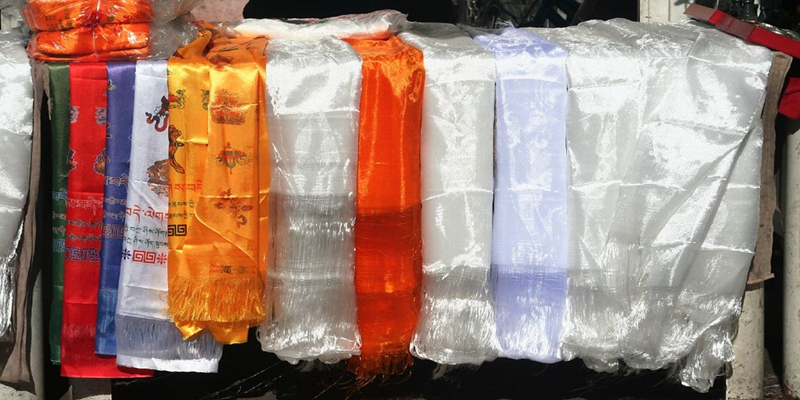Khatas: Tibetan Scarves
White scarves, also known as khatas or hadas, are given as greetings and expressions of respect to revered figures or notable individuals. When you encounter a lama, you should give him a khata. The lama can frequently be found with a scarf around his neck, which is normally acquired in the temples where he stays. Not presenting a scarf is viewed as being extremely impolite, if not immoral. Khatas are placed around photographs of revered lamas and other people to express respect. Tibetans may welcome one another informally by exchanging khatas. Additionally, scarves are offered as a token of friendship or a warm welcome to visitors or future guests. If someone gives you a scarf, hold it out with both hands, palms facing up. The scarf must be worn all the way through your departure.
Tibetan Buddhists frequently donate katas to statues of Buddha, sacred places, lamas, or they employ them in rituals. They stand for the recipient's utmost regard. Khatas are often loosely woven garments composed of raw silk. Silk is referred to in Tibetan as "khata." Top-notch ones are frequently knitted with designs like lotus flowers, bottles, umbrellas, and conches that symbolize happiness and luck.
Typically, khatas are white. Tibetans hold the color white in high regard because they think it represents prosperity, auspiciousness, sincerity, kindness, and fairness. White khatas represent the giver's pure heart. They have different lengths. Shorter ones are 1 or 1.5 meters long, whereas longer ones can be 10 or 20 meters long. The quality of the material varies, but in general it doesn't matter as long as the khata can convey goodwill.










